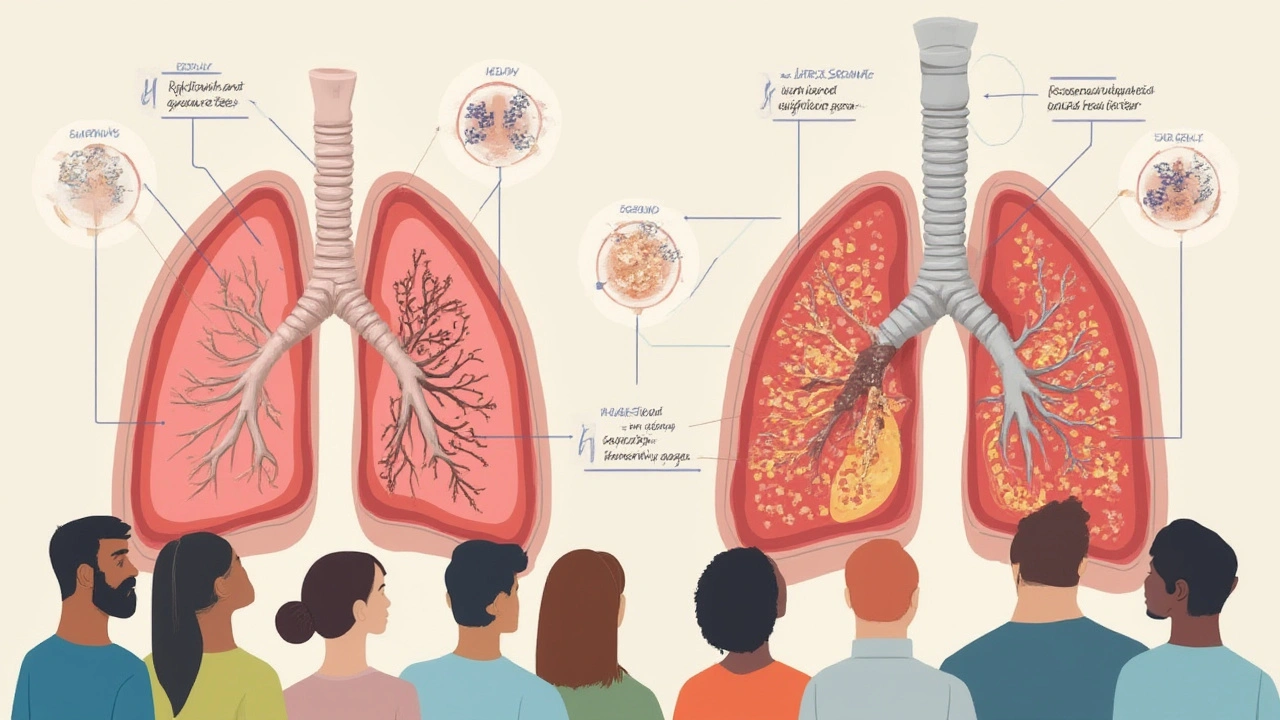Understanding TB Progression: From Infection to Disease
Ever wondered why some people get sick after catching TB while others stay fine? It all comes down to how the bacteria move through the body. When you first inhale Mycobacterium tuberculosis, the germs settle in the lungs and either stay quiet (latent TB) or start causing trouble (active TB). Knowing where you are on this path helps you act fast.
Stage 1: The Silent Settling (Latent TB)
In the latent stage, your immune system walls off the germs in tiny capsules called granulomas. You don’t feel sick, and a chest X‑ray looks normal. However, the bacteria are still alive, and about 5‑10 % of people will see the infection flare up later, especially if they get sick with HIV, diabetes, or take steroids. A simple blood test (IGRA) or skin test (PPD) can spot this hidden infection.
Stage 2: When TB Turns Active
Active TB shows up when the immune guard weakens. You might get a persistent cough, night sweats, fever, and weight loss. There are two flavors: primary TB, which appears soon after infection, and secondary (reactivation) TB, which crops up years later. Primary TB often affects children and can cause enlarged lymph nodes, while secondary TB usually hits adults and creates cavities in the upper lungs.
Symptoms don’t always line up perfectly, so doctors use sputum tests, chest scans, and sometimes even a bronchoscopy to confirm the bug. If you catch it early, a six‑month regimen of antibiotics—usually isoniazid, rifampin, pyrazinamide, and ethambutol—can clear the infection.
Risk factors matter a lot. Smoking, crowded living conditions, and poor nutrition all raise the odds that a latent case will become active. If you fall into any of these groups, talk to your doctor about a preventive course of medication, even if you feel fine.
Prevention isn’t just about vaccines. Good ventilation, wearing masks in high‑risk settings, and getting screened if you work in healthcare or prisons can stop the bacteria from spreading. BCG vaccine is common in many countries and offers modest protection, especially against severe childhood forms.
Knowing the timeline helps you make smarter choices. If you’ve been exposed to someone with TB, get tested within two weeks and again three months later. Follow up on any positive test with a chest X‑ray and talk about preventive treatment.
Finally, remember that TB isn’t a one‑time battle. Even after finishing treatment, keep an eye on your health for a few months. Any new cough or fever should prompt a quick check‑up. Staying informed and acting early keeps TB from stealing your health and stops it from moving forward in your community.
-
Pulmonary Tuberculosis Stages: Symptoms, Progression & Recovery Explained
Explore the stages of pulmonary tuberculosis, how it impacts the lungs, warning signs to watch for, and options for treatment and recovery in plain language.
